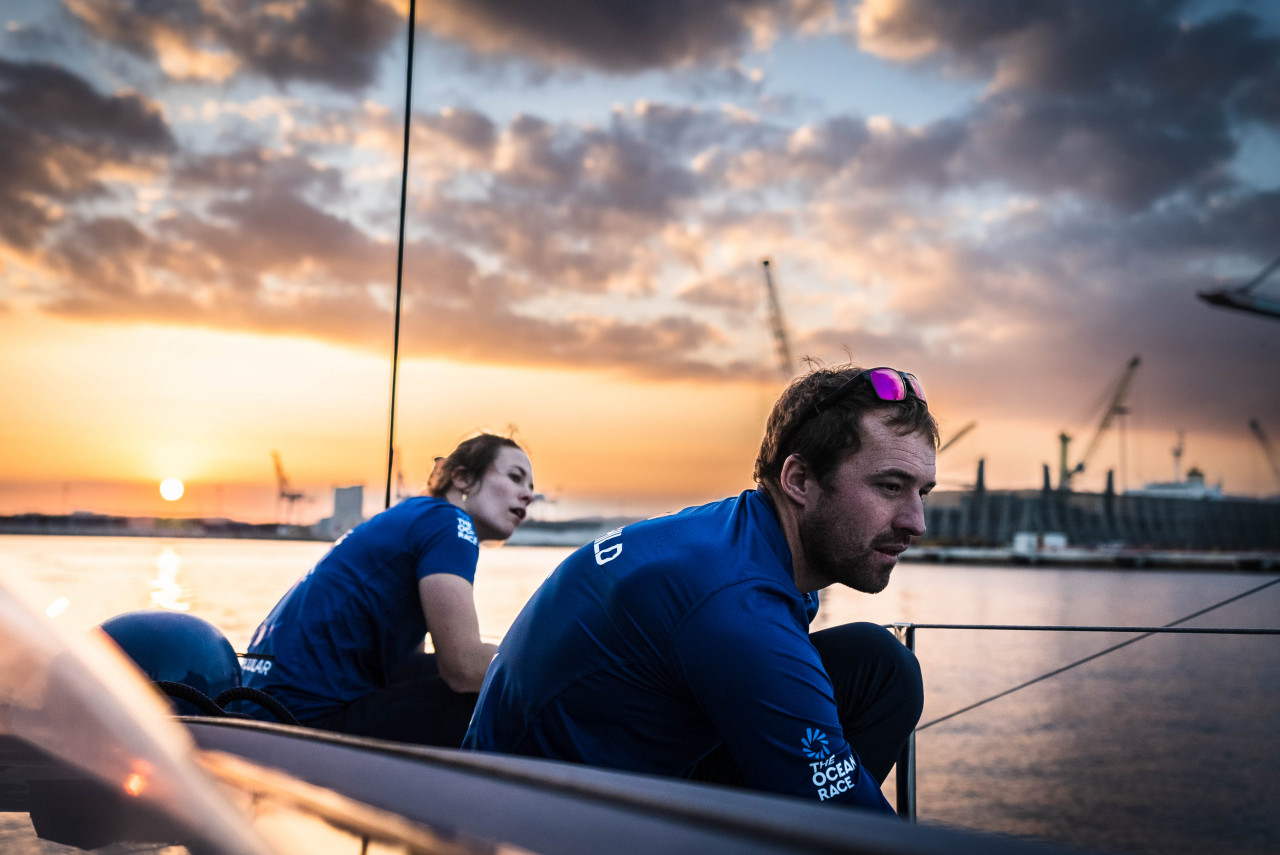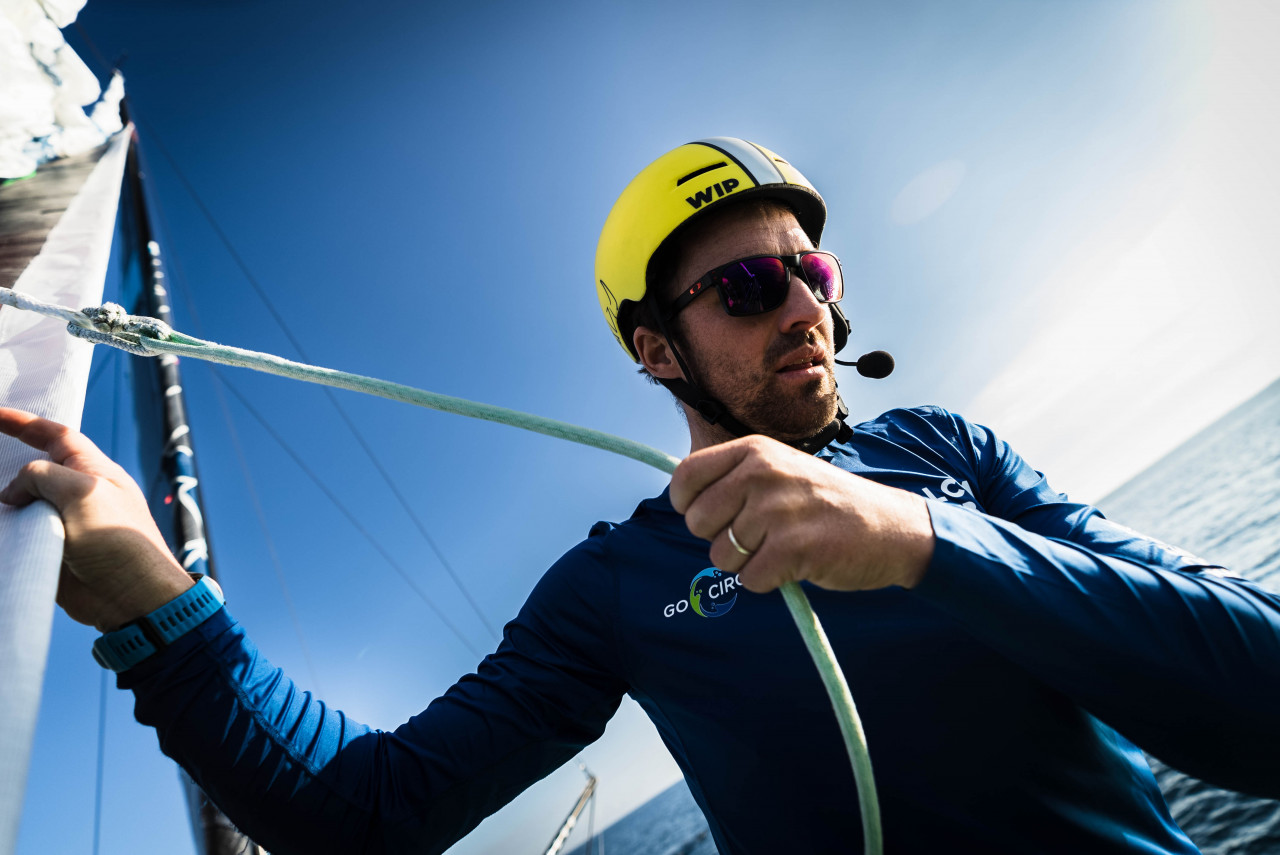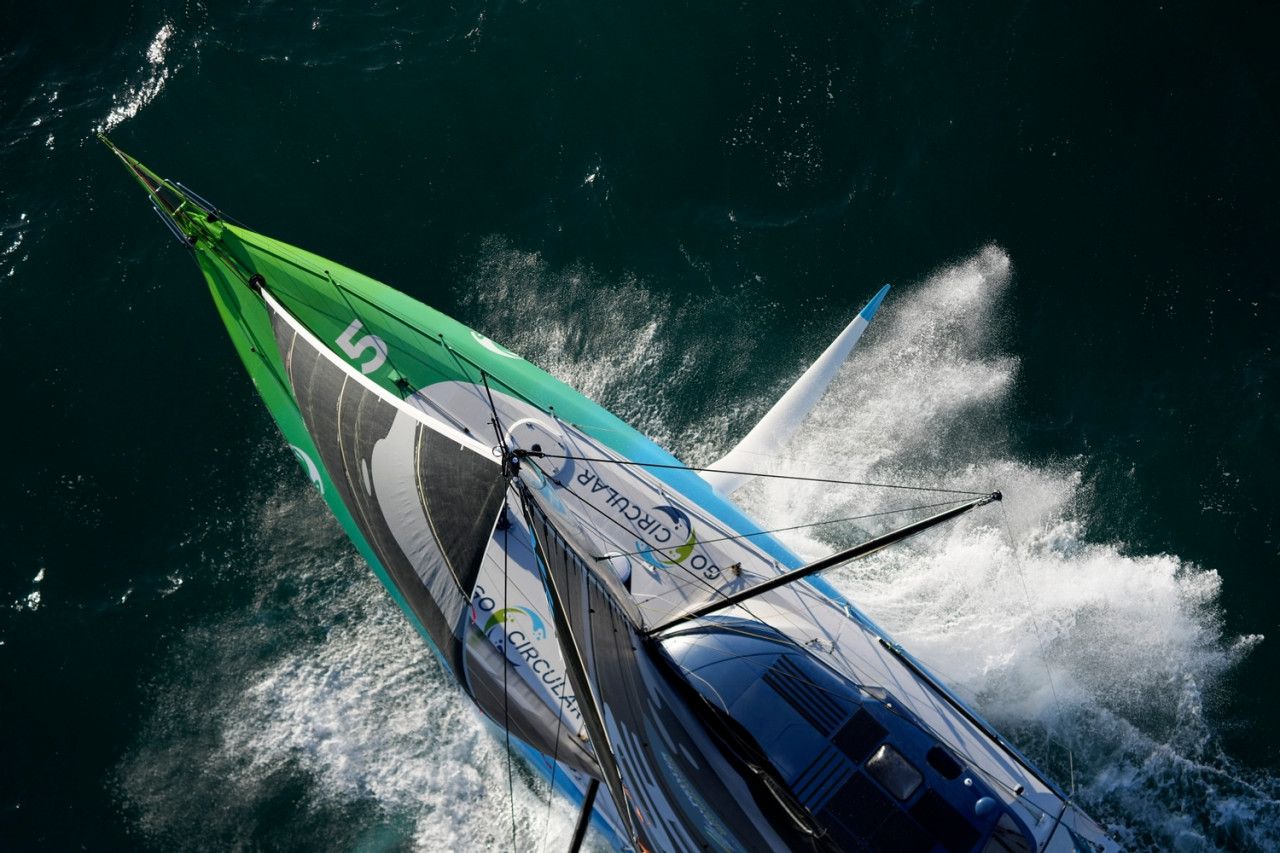This Ocean Race is going to be 99.9% under autopilot, but nothing has been lost argues Sam Goodchild

The Ocean Race 2023 is a major departure in so many ways – it features a new class of boat in the form of the IMOCA fleet, a completely new course, a new start date in the calendar and a new finish port at Genoa.
In terms of what happens on board, this race features the smallest crew numbers ever to take on what is regarded as the world championship of fully-crewed ocean racing. What those five sailors will be doing, as they race around the world over the next six months, is also quite different to what crews on the Volvo Ocean 65s were doing in the 2017/18 edition.
One of the main reasons for that is because, this time, there is no requirement for drivers – a key skill in all previous races, where being able to helm fast and safely for hours at a time, in any sort of sea conditions, was an essential ingredient in a winning team. Instead, the IMOCAs in this race will be driven by computers – or autopilots – for almost the entire duration of the race.
 © Julien Champolion | polaRYSE - Holcim-PRB
© Julien Champolion | polaRYSE - Holcim-PRB
We asked the British solo sailor Sam Goodchild, who is racing as part of Kevin Escoffier’s team on Holcim/PRB about this, and he was quite happy to acknowledge that – as he put it – “the pilot will be doing the work for 99.9%”of the time over the next 32,000 nautical miles.
On the face of it, it seems amazing that this essential skill of fully-crewed racing has been lost. Helming has always been at the heart of competitive performance in The Ocean Race and some would say it’s not the same sport if a computer is doing that part of the work. Nonsense, says Goodchild.
“For me, it is not the essential skill of racing,”he said at the Holcim/PRB team base on the dockside at Alicante. “There are so many other elements that come into it. You could have Peter Burling (the New Zealand America’s Cup-winning skipper) driving 24 hours-a-day, but if you go the wrong way or put the wrong sail up, he’s not going to do much good for you.
“Driving is obviously an important element,” he added, “but we spend much more time and energy, if not more, trimming our pilot as we did driving before, so the skillset has changed, as opposed to disappeared.”
 © Eloi Stichelbaut - polaRYSE / HOLCIM-PRB
© Eloi Stichelbaut - polaRYSE / HOLCIM-PRB
The simple fact is that IMOCA yachts are not set up for helming by hand. It is often very hard to see where you are going from the helmsman position and the crew are better off leaving that role to the pilot, just a solo sailors do. Instead their focus is on making continuous adjustments to the autopilot control while trimming the sails, setting up and trimming the angles of the foils and keel and ensuring that the ballast on board – both water ballast and the stack of sails and stores – is positioned for maximum speed.
“The biggest difference between old school Ocean Race sailors and short-handed French sailors, is trusting the pilot,”explained Goodchild laughing. “They didn’t have pilots on the old Volvo and Whitbread boats and they used to look where they are going. Now you are not looking where you are going, and you are trusting a computer that will occasionally go 90 degrees off course and point the wrong way, though that is rarer and rarer these days.”
 © © Georgia Schofield | polaRYSE | HolcimPRB
© © Georgia Schofield | polaRYSE | HolcimPRB
Hearing Goodchild talk about how they use the pilots on board the IMOCA boats, you realise just how sophisticated and clever these machines are. At their most basic, they can be set to follow a compass course or wind angle and can be programmed to achieve a certain heel angle. But there are all sorts of détailsan that can be applied to produce ever more precise results in the way a boat is being steered, as it slaloms downwind, for example, in the Southern Ocean at 30 knots.
Goodchild makes the point that not having to steer is often just as well because high-speed foiling IMOCAs are very demanding when it comes to sail trim and the sailors have to respond to continually, and often violently-changing, conditions as the boats go through a never-ending cycle of acceleration and deceleration.
“When a foil picks the boat up out of the water and it starts moving fast, the apparent wind angle might move 10-15 degrees, and then you might smash into a wave in front, and it comes back 20 degrees. That’s where – as a trimmer – you have to find the average which works well between what you are able to do in terms of keeping up with it, and what is a good average setting. Because you can’t possibly ease two metres of traveller and mainsheet every time you come into a wave, and then winch it all back on again as you pick up speed,”he said.
Fellow Briton Will Harris on Team Malizia argues that the way this generation of IMOCA sailors will use their pilots in The Ocean Race is just another form of driving. “The term ‘driving’ has been changed,” he said. “It’s gone from using a wheel or a stick that you hold, to now experiencing the feeling of a boat through a keypad and computer.
“The keypad is effectively our tiller now and it’s not like we push the ‘on’ button and it goes off on its own – it’s not like that at all. We are constantly adjusting the settings. So it is super-complicated to use. And if you try to put any old person on it – and they try to switch it on – the boat would be all over the place. We have got to try it and make it steer as well – if not better – than a human,” he added.
Ed Gorman
Teams info
After a stunning 2025 season Sam Goodchild is the IMOCA Globe Series Champion for the second time
After a long season at the top of the IMOCA fleet that featured three race wins, Great Britain’s Sam Goodchild is for the second time in three years the IMOCA Globe Series Champion.
•••Quel rôle peut jouer la course au large dans la transformation du transport international ? Avec Pie…
Pour ce 10ᵉ épisode de Transitions, enregistré au Havre lors du départ de la Transat Café L'Or, nous recevons Jeremy Pochman, PDG de 11th Hour Racing, et Pierre-Antoine Morvan, responsable du pôle course au large et supe…
•••